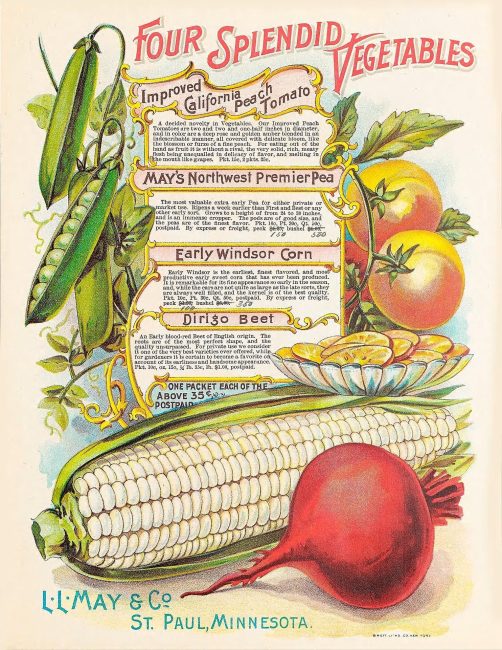Authored by: Carol Shirk
 It is January and the weather outside is frightful; what is a gardener to do? The catalogs are rolling in and it is time to plan. Two questions arise: which catalog to use and how to interpret the language in the catalog? Much misinformation exists about GMO seeds in particular, so stay with me as I try to explain.
It is January and the weather outside is frightful; what is a gardener to do? The catalogs are rolling in and it is time to plan. Two questions arise: which catalog to use and how to interpret the language in the catalog? Much misinformation exists about GMO seeds in particular, so stay with me as I try to explain.
Starting with seed catalogs, first determine if you need to order your seeds or if you can simply go to a local store and pick up what you need. If you are just buying a few things, are not particular about the variety, and only want seeds in the spring, ordering is likely not necessary. The Federal Seed Act of 1939 requires accurate labeling, purity standards, and minimum germination standards, so even smaller packets of cheaper seeds will produce similar results to more expensive seed packets in catalogs.
If catalog ordering is the way to go, choose one well organized with good descriptions. Like plants should be grouped together, potatoes with potatoes and corn with corn, not scattered all about. Look for information on disease resistance, plant size, maturation dates, and planting guides. Compare prices between catalogs. Unless you are looking for a particular variety that is unavailable from one vendor, prices should be similar.
As you choose your seeds, whether in a store or from a catalog, you must understand the language on the packets. What is the difference between hybrid, heirloom, open-pollinated, GMO-free, and organic? Are some worth more than others?
A hybrid simply has two different parents, but no genetic engineering. Breeding (which can happen naturally, but more commonly is manually directed) occurs to get a plant with desired characteristics such as disease resistance, larger fruits, more uniformity, etc.
Many vegetables are open-pollinated, reproducing by either cross-pollination or self-pollination. Self-pollination occurs when both male and female reproductive structures are on the same plant and pollination can occur without travel. Cross-pollination requires two plants and relies on wind, water, or insects to complete the process. Because open-pollination does not involve human involvement, is it not considered hybridization.
Heirloom varieties are only open-pollinated. Heirloom varieties are preserved by growers who save seeds from year to year and who make sure that no cross-pollination takes place. Some experts require that heirlooms be at least 50 years old to qualify for the “heirloom” classification.
Laboratories create genetically modified organism (GMO) seeds using high-tech methods. A plant’s DNA is altered in a way that does not occur in nature. If you are spending extra money on “certified non-GMO” seeds you are unequivocally wasting your money. There are only nine commercially available GMO-crops from seed: corn, soybeans, cotton, alfalfa, sugar beets, canola, papaya, squash and potato. None of these are available to the home gardener. You may see the “GMO-free” pledge on seed packets, but this is a marketing ploy and nothing more.
Lastly, is the extra money worth it to buy organic seeds? If you are trying to maintain organic certification, you most certainly need organic seed. Otherwise, the methods you use in your garden will likely be more important in your garden than the fact that you spend substantially more money on organic seeds.
Carol Shirk
Certified Master Gardener




